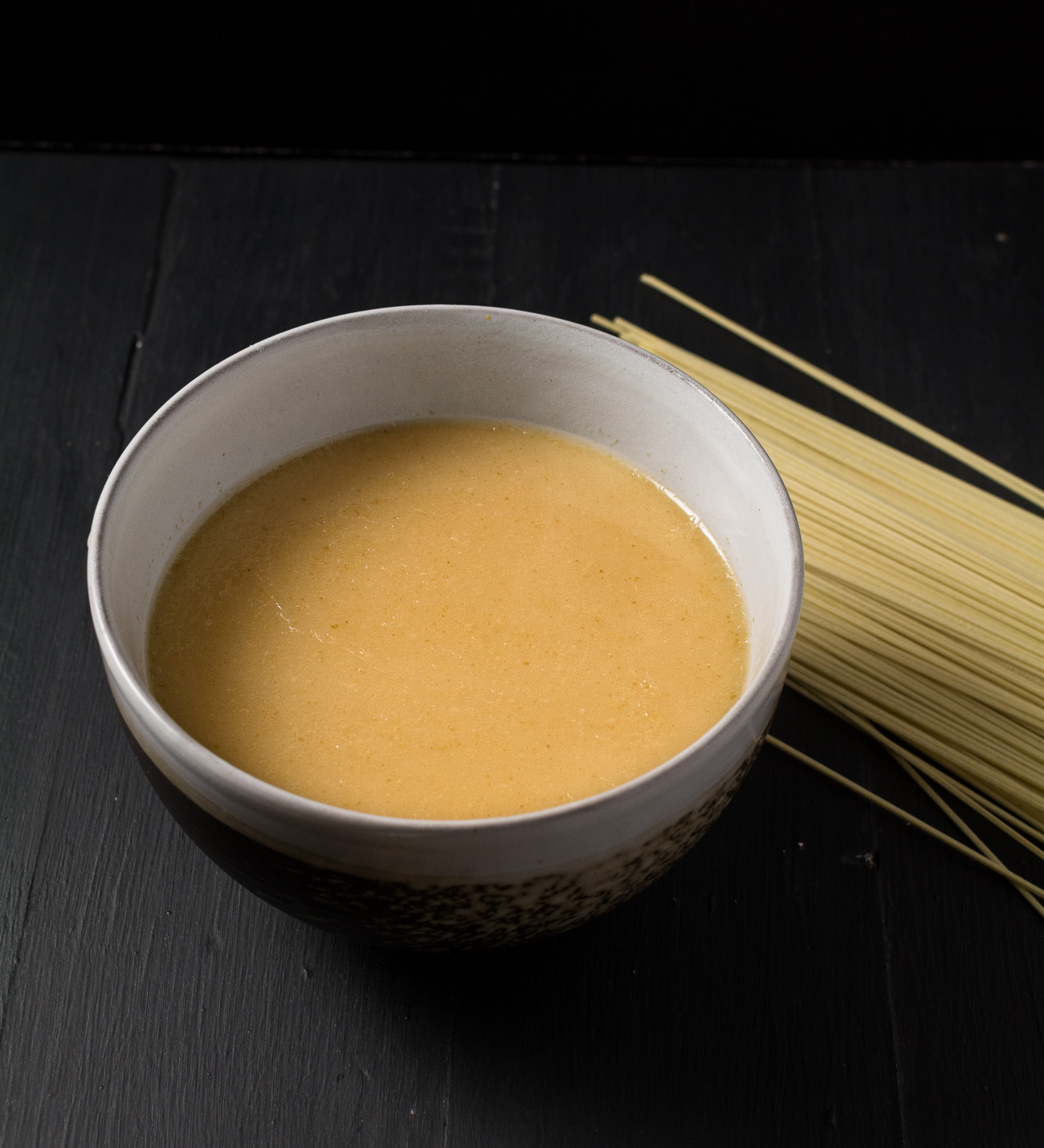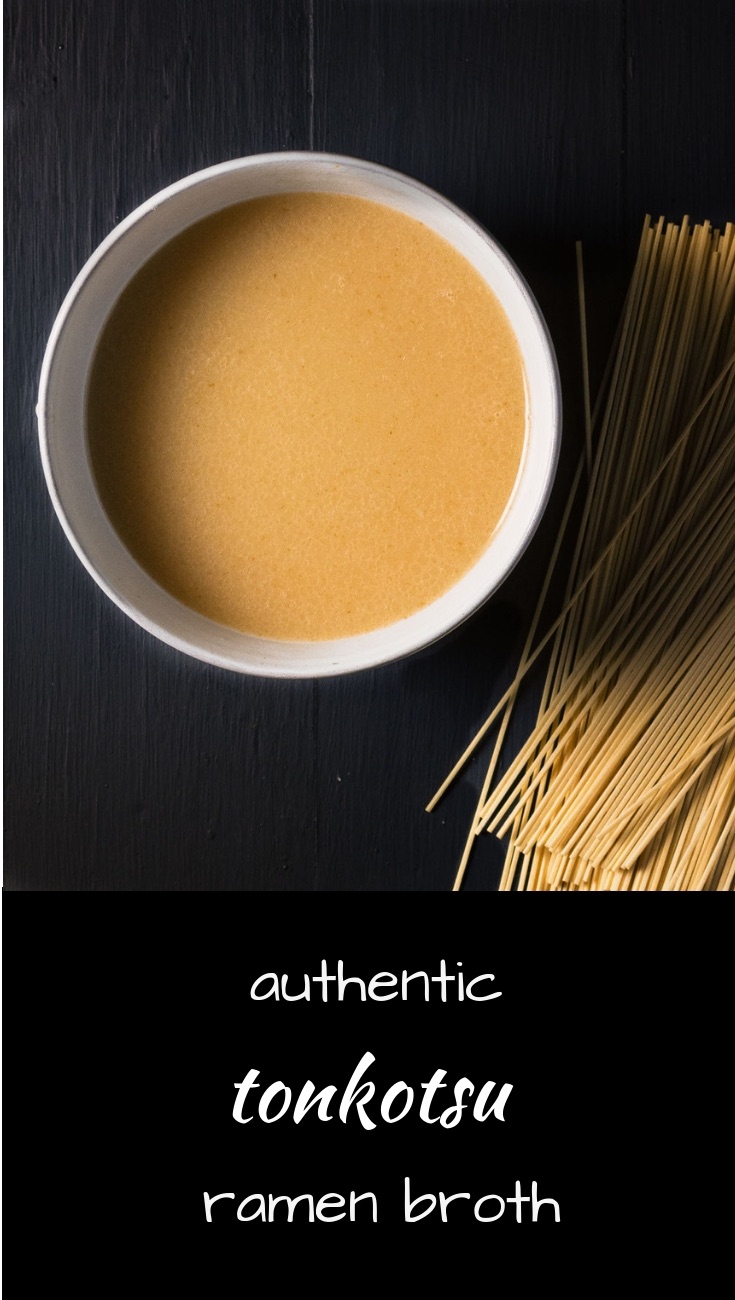There is something magical about a great bowl of Japanese ramen noodle soup. It’s absolutely wonderful. If you’ve never had good ramen go out and get some.
Just do it. Today. Noodles. Broth. Pork. Egg. Wow. If the noodles are the backbone, the tonkotsu ramen broth is the heart and soul.
This is the first step towards a good bowl of tonkotsu ramen
This is a descent into madness. I’m making the tonkotsu ramen broth from scratch. I’m cooking pork belly. I now know the difference between the 7 minute and 7 1/2 minute egg.
I’ve figured out how to make spaghettini into the alkalinated noodles. I’ve replicated the Momofuku pork belly. Got a lesson in their kitchen for that. For real. The rest of the tonkotsu ramen recipe is here.
All this work so I can maybe come close to the $13.00 bowl of ramen at my local ramen joint. Crazy. Follow me only if you are crazy too. Or you just love ramen as much as I do. Turns out it’s pretty easy. And it’s delicious. Good living.
Making tonkotsu ramen broth is a real eye opener. If you know how to make classic French meat stocks forget everything you know. This broth is cooked at a roiling boil for 12 hours.
A rolling boil. The absolute antithesis of the French technique.
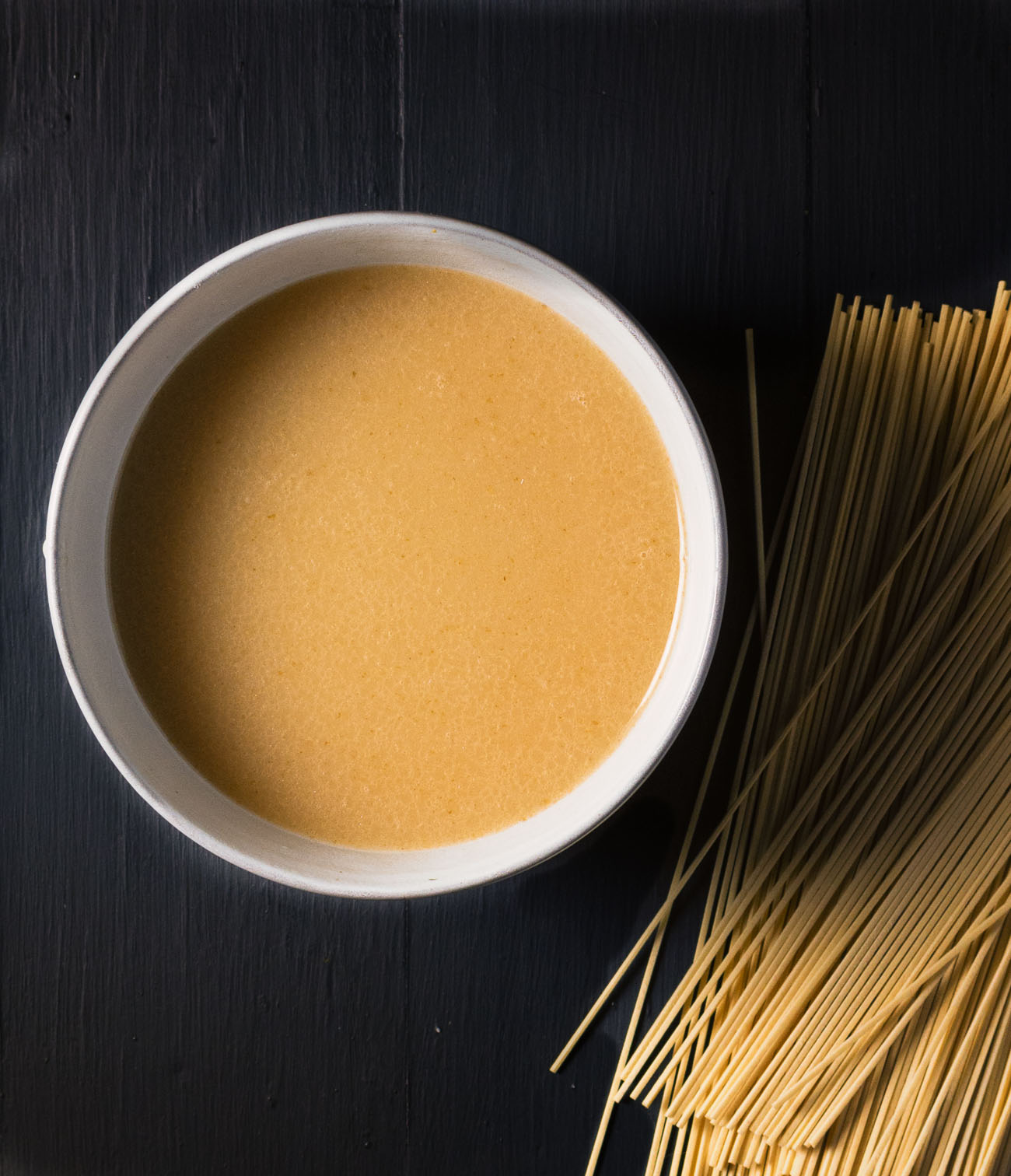
The bones of the matter
I like pork neck bones for tonkotsu broth. It’s not make or break though. You just want bones with a bit of meat on them. Adds flavour.
And you probably don’t want to pay a fortune for them. At least I don’t. Anything that fits that description will work.
I go to my local Asian grocer. Buy neck bones. They always have them. I know they work. And they are cheap. Perfect.
Clean bones is the key to a good tonkotsu ramen broth
There’s a lot of Asian technique here that you don’t see in classic western cooking. Blanching the bones is a big one.
And a really good one. Add all the bones to a pot. Bring to a boil. Cook for about 5 minutes. Then dump it all out and rinse the bones.
I’m not a fan of putting flavour down the sink. But in this case it’s genius. Doesn’t make a difference to the end flavour.
But it does get rid of all that muck floating on the surface of the stock. Muck that would get boiled into the stock. Muck that would likely ruin the broth. Did I mention this is genius?
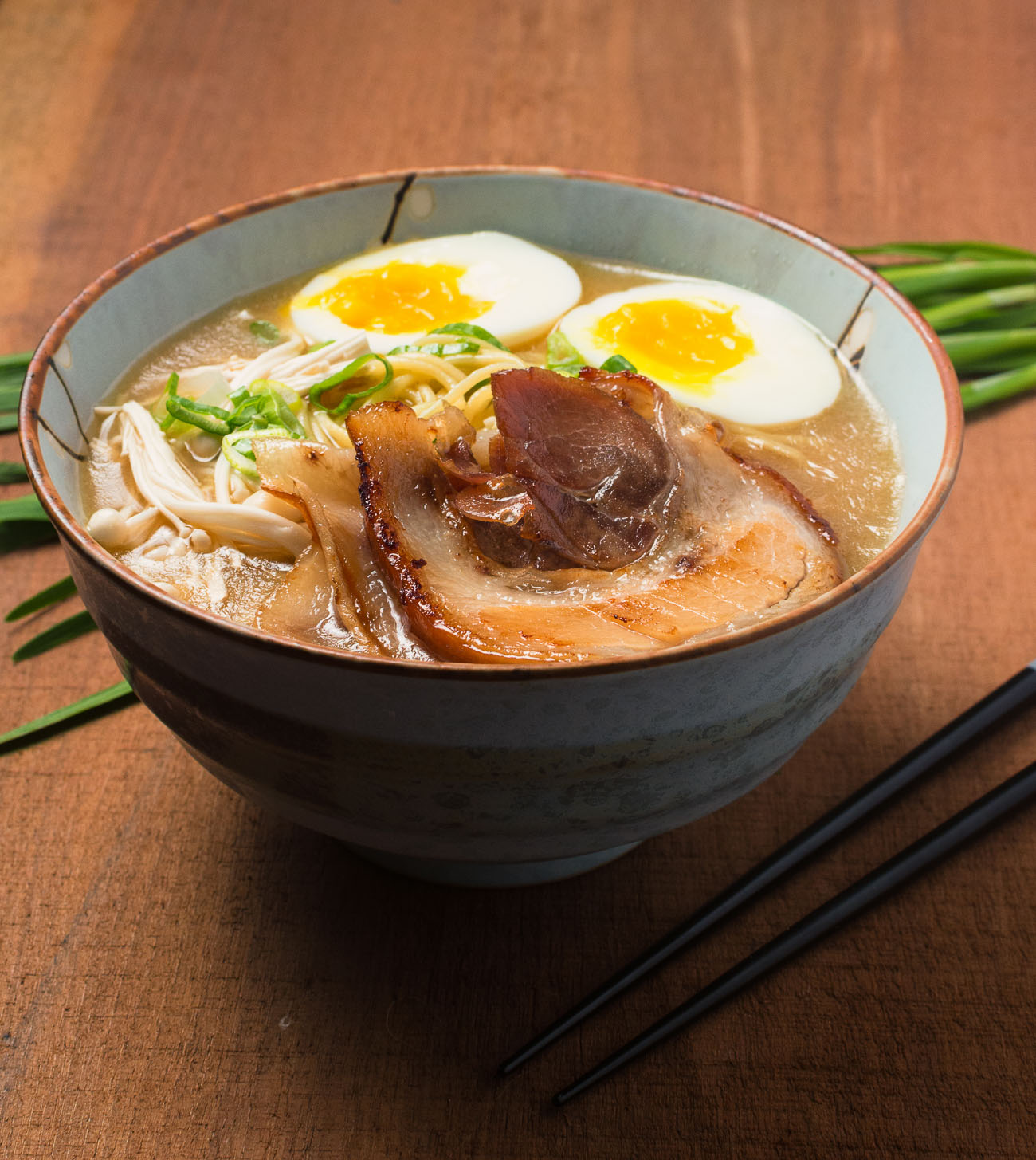
A rolling boil makes a magical broth
Something happens when you cook pork bones at a rolling boil. All the gelatin and fat and goodness comes out of the bones and turns the stock that milky white colour.
If nothing else, this experience was absolutely fascinating. Just make sure you keep adding water to keep the bones submerged.
Don’t use a slow cooker for this. Won’t work. People have tried. They have failed. Read the comments below…
To cover or not to cover?
You can find videos on youtube of Japanese ramen joints making their broth. Huge pots of stock boiling away. They don’t cover their pots. But they have staff in the kitchen full time.
You can try it uncovered if you are planning to hang out in the kitchen all day. Your call. I don’t though. A loosely covered lid keeps some of the evaporation in check.
You still need to pay attention though. You are maintaining a rolling boil for 12 hours. Covered or not it can boil dry. And that’s a whole world of hurt nobody needs.
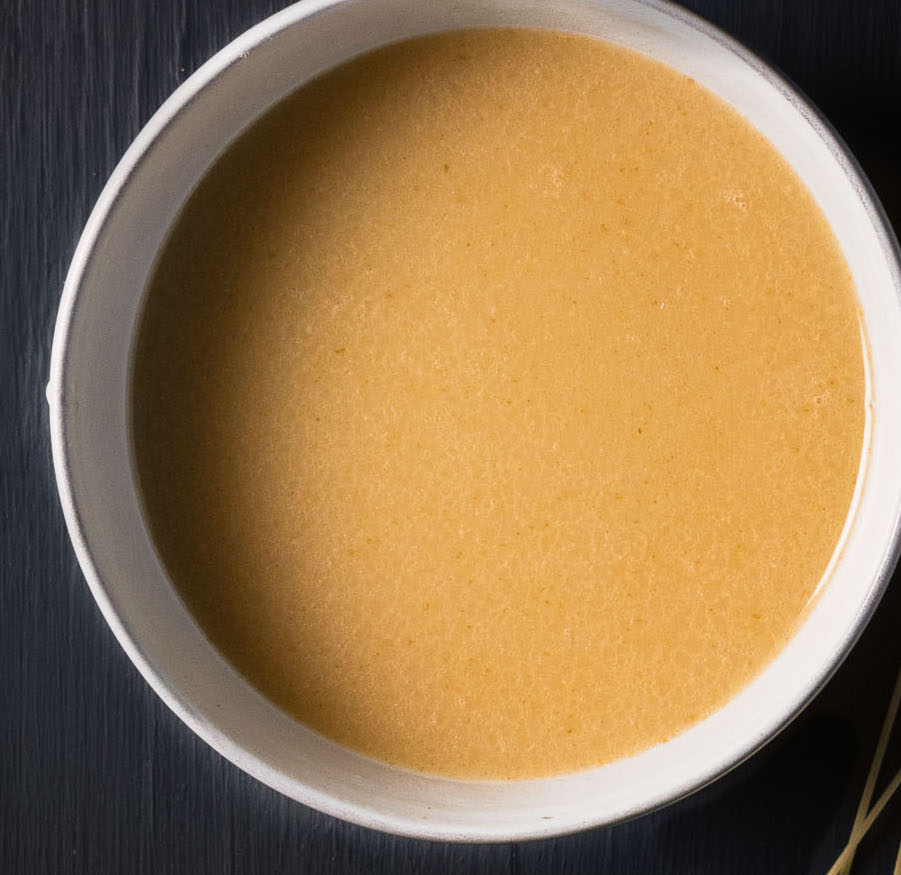
No more secrets
This ramen broth is delicious. This part is nailed. Nothing to it really. Just need to follow the recipe. No secrets here. Not anymore. The tonkotsu ramen turned out pretty amazing too.
This is base. The foundation to a great bowl of ramen. You can make just about any tonkotsu style ramen with it. Next step is the tare. That’s what pushes it in different directions. Shio. Shoyu. Miso. Your choice.
Tonkotsu ramen broth. Not the quickest way to make something great. But so totally worth it.
tonkotsu ramen broth at home
Ingredients
- 6 lbs pork bones with a little meat on them. Pork neck bones work well.
- 4 oz white mushrooms sliced
- 1 onion peeled and halved
Instructions
- Place the pork bones in a large stock pot and cover with cold water.
- Bring to a rolling boil over medium high heat. At this point a huge mess of scum will form.
- Remove from heat. Dump the water and carefully rinse all the bones under cold running water.
- Return the bones to the stock pot. Cover the bones with cold water and bring to a rolling boil.
- Add the mushroom and onion and maintain a rolling boil for 12 hours, replenishing the water along the way. You want to keep the bones under water the whole time. It’s best to cover the pot for this or you’ll be adding water every 30 minutes.
- After 12 hours, remove the stock from the heat and cool slightly. Remove the bones with a slotted spoon and strain the stock.
- The stock will keep in the refrigerator for 2-3 days or can be frozen at this point.
- The broth is flavoured by the tare of your choice. There are two good one’s in the tonkotsu ramen recipe.

